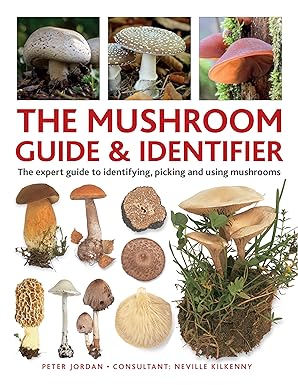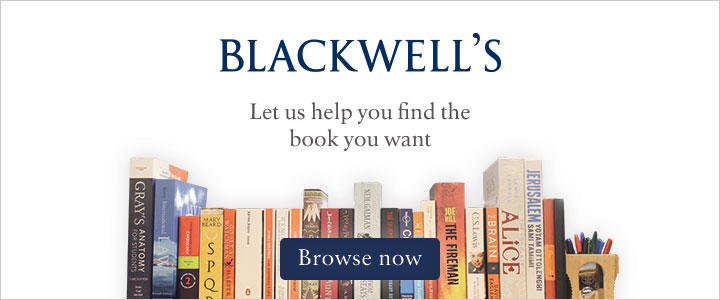
Mushrooms are fascinating for so many reasons, but not the least of them is that you can eat many of them with relish but if you eat some of them they may constitute your last meal. And so a book nudging you towards picking and using mushrooms has to be pretty strong on the warnings and clear on the identification features. I’m no expert (which is why foraging for fungi seems an exotic and exciting prospect to me) but it seems to me that this book gets the balance between encouragement and caution right.
It is a very attractive book thanks to the inherent weirdness and beauty of the mushrooms and maximised by very clean and clear page layouts. You don’t have to be planning to scoff self-gathered mushrooms to find this book attractive and interesting. However, if that is your plan, then the page ‘Safe Mushrooming’ has enough stern warnings to instill caution into any but the most foolhardy. If I were to take up foraging for mushrooms I would read that page of this book every time I went out into the field with its chilling last sentence ‘Always keep a specimen back, so that you have something to take with you to hospital for a mycologist to identify‘.
It’s not even as though there are two types of mushroom from the point of view of danger – the safe and the lethal. No, there are mushrooms that are yummy, some that are edible but don’t taste good, some which will give you stomach upsets if you don’t cook them properly and others to which some of us are allergic but others are not not. There are some great names for these species and in the section on poisonous mushrooms there are five species with helpfully off-putting names (though they all look rather attractive and mild to me), namely: Sickener, Poisonpie, Deadly Fibrecap, Deadly Webcap and Funeral Bell (possibly the most attractive of those five).
The accounts of edible and poisonous species are kept separate but flicking through them the baddies look as attractive as the goodies (and why wouldn’t they?). This is probably true of people too, except in old western films where you can make a pretty accurate assessment of the moral fibre of the male characters by the colour of their hat, shirt and horse and by whether or not they appear to have shaved and washed recently. Such an approach won’t work with mushrooms and you may have to resort to making spore prints to be certain of identification.
Few people writing about their favourite aspect of natural history have the difficult task of trying to enthuse people while warning them too. No-one has to write ‘Marsh Tits make charming companions in the field but the very similar Willow Tit might peck your arm off so be sure to learn their calls properly and avoid any individuals about which you are not sure’. This book seems to get the balance right and I’m sure (because I can feel it myself) some will be drawn to the subject partly because of, rather than in spite of, the danger.
I enjoyed this book very much because mushrooms are so weird and so beautiful but also because it has to deal with the tricky issue of poisoning in a responsible and clear manner.
This book has Peter Jordan’s original text updated by Neville Kilkenny.
The cover? Just right, I’d give it 9/10.
The Mushroom Guide & Identifier: an expert manual for identifying, picking and using edible wild mushrooms in the British Isles by Peter Jordan is published by Lorenz Books.
Buy direct from Blackwell’s – a proper bookshop (and I’ll get a little bit of money from them)
[registration_form]
Nice to see a fungi book reviewed but does it have to be one which encourages you to eat them?
Since reading “Reflections” I decided to get more political !
Why can’t we just enjoy and conserve fungi for themselves?
I would recommend Collins complete guide to British Mushrooms and Toadstools as a good book to start with.
If you’re really interested join a local Fungus group and/or The British Mycological society.
And don’t forget UKFungusDay.
I’m hoping that Mark will review my new book “British birds and their Eggs- Simple recipes for every Day” which is to be published on the first day of next month.
Gary – you write it, I’ll review it!
It is certainly possible to enjoy fungi just for themselves and, as with other taxonomic groups, there are many aspects that can fuel enthusiasm including their diverse beauty, the challenges of identification and their fascinating ecology and ‘behaviour’. But I’d argue that it is also acceptable to take a few now and then for personal consumption. It is only the fruiting body that is taken, with most of the organism remaining alive below the substrate, and I believe research has shown that repeated removal of fruiting bodies over many years did not result in a decline in productivity. Whatever we eat has an environmental impact but my feeling is that the stuff we buy from the supermarket probably has a significantly larger impact than the few mushrooms, blackberries or elder flowers that we might occasionally forage from the countryside.
Intensive agriculture, pollution and asphalting/concreting the landscape are undoubtedly harmful to fungi, as they are for plants and animals, and so I would argue are more important targets for the political ‘fungophile’.
In the main I agree with your sentiments regarding picking a few for personal consumption. However I worry that it has become too “trendy” and am concerned by unsustainable harvesting.
I get a bit fed up with the first question I’m asked about any particular fungus is “Is it edible”.
After all traditionally it was blackbirds in a pie not boletes.
I’m always intrigued by the naming of the amethyst deceiver.
Which can be confused with the lilac fibrecap. Which is rather nastier, when consumed.
Just trying to be a fun guy.